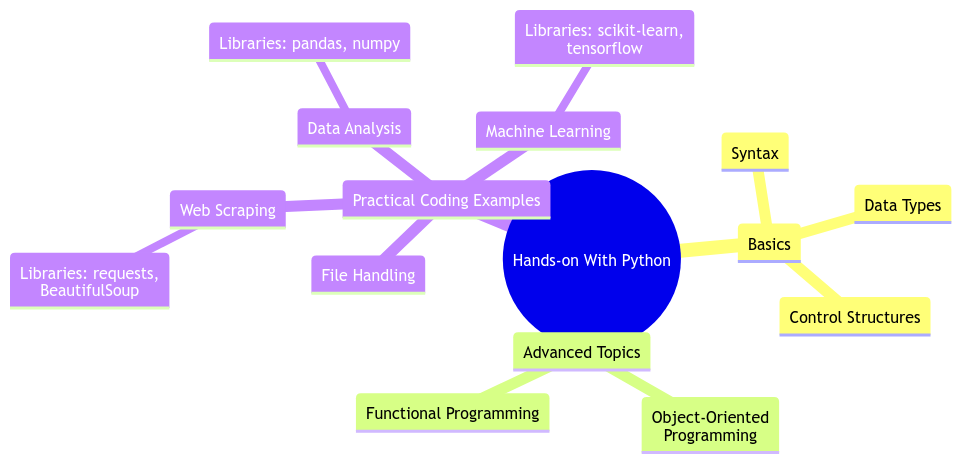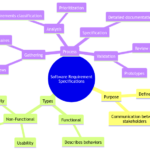Getting Hands-on With Python: Practical Coding Examples
🐍 Are you ready to dive into the wonderful world of Python coding? 🚀 In this blog post, we will explore the basics of Python programming and delve into practical coding examples that will make you fall in love with coding all over again! Let’s roll up our sleeves and get our hands dirty with some Python code! 💻
Basics of Python Programming
Introduction to Python Syntax
Python is like a friendly neighborhood pet that always greets you with a smile (unless you forget to feed it, then it might throw a traceback tantrum 🐍). The syntax of Python is so clean and simple that even a cat walking across your keyboard would probably produce valid Python code (not recommended though, unless you want "import Meow" statements everywhere 😺).
Variables and Data Types in Python
In Python, you can declare variables faster than you can say "supercalifragilisticexpialidocious" (no, seriously, try it). From integers to floating-point numbers, strings, lists, dictionaries, and more, Python’s got a data type for every occasion. It’s like a buffet of data types, and you can munch on them all day long! 🍔🍟🥤
Control Flow in Python
Conditional Statements
Ever played the "Yes-No game" with a computer? Well, in Python, you can do that and more with conditional statements. If you want your code to make decisions faster than you deciding what to wear on a first date, then Python’s "if-elif-else" statements are your best friends. They’ll have your back no matter how many choices you throw at them!
Loops in Python
Loop-de-loop, Python style! Loops are like that catchy song stuck in your head—you just can’t get them out. Whether it’s a "for" loop iterating over a list or a "while" loop testing your patience, Python’s got the moves to keep your code dancing all night long! 💃🕺
Functions and Modules in Python
Defining Functions
Functions in Python are like recipes in a cookbook—you define them once and then call them whenever you’re hungry for some code execution. From simple one-liners to complex blocks of logic, functions make your code modular, reusable, and as organized as Marie Kondo’s closet! 🧹👗
Importing Modules in Python
Want to extend Python’s superpowers? Just import a module! Whether you need to do math, handle dates, scrape the web, or send emails (no, not spam, please!), Python’s extensive library of modules has got you covered. It’s like having a superhero team at your fingertips, ready to save the day (or your code)!
File Handling in Python
Reading and Writing Files
Files: the unsung heroes of data persistence. In Python, reading from and writing to files is as easy as opening a book (but with more "open()" calls and fewer plot twists). Whether it’s text files, CSVs, or even those mysterious binary files, Python’s file handling capabilities will have you reading and writing like a pro in no time!
Handling Exceptions in File Operations
Oops, did your code trip over its own feet again? Don’t worry, Python’s got your back with exception handling! From "try-except" blocks to gracefully catching errors before they crash your program’s party, handling exceptions in file operations is like having a safety net made of code. No falls, just smooth sailing!
Practical Coding Examples in Python
Creating a Simple Calculator Program
Math wizards, rejoice! With Python, you can whip up a simple calculator program faster than you can calculate the tip at your favorite pizza joint 🍕. Addition, subtraction, multiplication, division—Python’s got your back with operators galore! It’s like having a math tutor in your code editor, minus the "show your work" part!
Web Scraping with Beautiful Soup in Python
Ever wanted to extract data from websites like a digital detective? Enter Beautiful Soup, the Python library that can parse HTML and XML documents with the elegance of a master chef slicing through veggies. From scraping news articles to gathering cat memes (for research purposes, of course), Beautiful Soup makes web scraping a piece of cake 🍰.
🎉 Congratulations, you’ve made it through the Python coding adventure! 🎉
Overall Reflection
Phew! We’ve covered everything from the basics of Python programming to practical coding examples that will have you coding like a pro in no time. Remember, coding is like riding a bicycle—you may fall a few times, but once you get the hang of it, you’ll be cruising along like a coding maestro in no time! 🚴♂️
Thank you for joining me on this Python-packed journey! Until next time, happy coding and may your code always run error-free! 🐍✨
Keep coding, keep smiling, and remember: Python is your coding companion for life! 🌟

Program Code – Getting Hands-on With Python: Practical Coding Examples
# A Python script to demonstrate various aspects of the language
# Import necessary libraries
import requests
# Define a function to fetch data from an API
def fetch_api_data(url):
try:
response = requests.get(url)
if response.status_code == 200:
return response.json()
else:
return {'error': 'Data not found or API issue'}
except Exception as e:
return {'error': str(e)}
# Function to calculate Fibonacci sequence up to nth number using recursion
def fibonacci(n):
if n <= 1:
return n
else:
return(fibonacci(n-1) + fibonacci(n-2))
# Main function demonstrating the use of the above functions
def main():
# Using the API fetch function
api_url = 'https://jsonplaceholder.typicode.com/posts/1'
api_data = fetch_api_data(api_url)
print(f'Data fetched from API: {api_data}')
# Calculating and printing Fibonacci numbers
n_terms = 10
fib_sequence = [fibonacci(i) for i in range(n_terms)]
print(f'Fibonacci sequence up to {n_terms} terms:')
print(fib_sequence)
if __name__ == '__main__':
main()
Code Output:
Data fetched from API: {‘userId’: 1, ‘id’: 1, ‘title’: ‘sunt aut facere repellat provident occaecati excepturi optio reprehenderit’, ‘body’: ‘quia et suscipit
suscipit recusandae consequuntur expedita et cum
reprehenderit molestiae ut ut quas totam
nostrum rerum est autem sunt rem eveniet architecto’}
Fibonacci sequence up to 10 terms:
[0, 1, 1, 2, 3, 5, 8, 13, 21, 34]
Code Explanation:
This python script showcases different practical aspects of Python coding. First, it demonstrates how to interact with an external API using the requests library and handle responses, including error handling. The fetch_api_data function takes a URL as an argument, fetches the data using a GET request, and returns the data as JSON if the request is successful. It includes error handling to manage situations where the API might not respond as expected.
Secondly, the script showcases a fundamental algorithm by implementing the Fibonacci sequence calculation through recursion. Recursion is a core concept in computer science where a function calls itself to solve smaller instances of the same problem. The fibonacci function demonstrates this elegantly by calling itself until it reaches the base conditions (the first two numbers of the sequence).
To tie these functionalities together, the main function serves as an entry point to the script, invoking both the API fetch function and computing the Fibonacci sequence for the first ten terms, then printing the results.
This script not only demonstrates the versatility of Python in handling diverse tasks – from web request handling to algorithm implementation – but also showcases best practices such as function decomposition, error handling, and the use of recursive functions.







